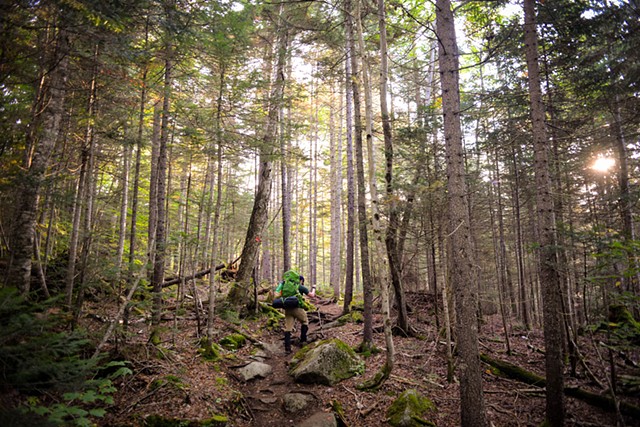Hike Responsibly

I am a New Jersey-based photographer which means that I am on Lenapehoking, land stolen from the Lenape.
As a landscape photographer, it is my responsibility to practice Leave No Trace, both while hiking and while sharing images. For this reason, no individual mountains, holes, or valleys are identified, but rather portfolios are listed by region. In particular, the Adirondack Mountains, where many of my images are taken, are suffering from over-use and irresponsible hiking practices. Wherever you hike, please make sure to research thoroughly how to be a responsible hiker, climber, steward, and photographer. These guidelines vary by region and are pivotal to learn, for your safety and for that of the natural spaces. For instance, the DEC has a list of very specific guidelines for camping and hiking in the ADK and Catskill Mountains. The Adirondack High Peaks summits have delicate flora, which cannot be camped on or stepped on, and issues with erosion on trails, which means it is essential to stay on the trail and walk through mud (yes, the famous ADK mud) and on rocks. Bear cans must be opaque (see here for more information), and always used while back country camping. This is for your own safety but also that of the bear - there is no reason that New York's black bears should become "nuisance" bears, and no reason that any should be killed due to human laziness. We must take complete responsibility and have total respect for the animals and plants in the areas we are hiking. Finally, càirn in the Adirondacks are not decorative - they are valuable trail markers and a communication system, often used on summits and unmaintained trails, generally to mark safe river crossing points and where to avoid delicate flora. Many trails do not have blazes and many summits are above the tree line in NY, making them reliant upon càirn, so please do not stack your own rocks outside of these trail càirn, and do not knock over càirn that you see unless you are positive that they are not marking a trail. This depends on the park you are hiking in, so always research trail signage before taking it upon yourself to dismantle rock stacks, as this can lead to erosion as hikers veer off trail trying to find their way back to a herd path - see NPS guidelines on càirn for some more information.
For more information on Leave No Trace, see here, with links to individual LNT principles below:
1 - Plan Ahead and Prepare
2 - Travel & Camp on Durable Surfaces
3 - Dispose of Waste Properly
4 - Leave What You Find
5 - Minimize Campfire Impacts
6 - Respect Wildlife
7 - Be Considerate of Other Visitors
For more information about hiking in the Adirondack Mountains, see the Adirondack Council's LNT and Resources pages, and the Adirondack Mountain Club's LNT and Hiking in ADK pages.
As for Iceland, planning is pivotal, and weather can change within moments. See safetravel.is for thorough guidelines. For more information about hiking responsibly in Iceland, see Mountain Guides' tips and be sure to thoroughly research the trails, wildlife, and areas that you will be exploring, as the moss and lava fields are very delicate, and the weather is very erratic and can be deadly. Please always check Vedur.is, the Icelandic Meteorological website, for up-to-date information on weather, wind, avalanche, earthquake, and, yes, aurora conditions. Always check the road conditions as well, as there are many days that travel is simply not possible around the countryside. Finally, heed the advice of your guides and all warning signs, as things that sound like they aren't a big deal, such as sneaker waves, are very real and deadly. Iceland can be a very beautiful but dangerous place to travel, so please, for your sake and for the sake of search and rescue workers, take this very seriously.
This is obviously not an exhaustive list of information, so please research any area you are hiking in thoroughly and take nature very seriously. - M